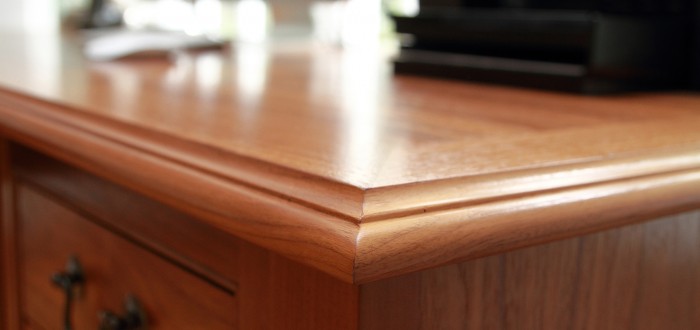Once you have taken so much time over creating a beautiful wood veneered piece of furniture or panelling, it is useful to be aware of how to care for it. Let’s look at best practice when it comes to looking after natural wood veneers and veneered furniture.
Everyday wear and tear is part and parcel of life. Heat, sunlight, moisture, scratches and scuffs can all impact upon the overall appearance of any furniture, including veneered pieces.
Treating scratches and scuffs on veneered furniture
Scratches and scuffs are fairly easily treated. Start by cleaning with a mild soapy water solution to get rid of any silicone, wax or grime. Then, if the mark is small and not too deep, take a good quality furniture polish and rub on using a soft cloth. The scuff should disappear in a few minutes. For deeper scratches, you may need a wax filler specifically designed for the job.
Preventing sun damage
The sun is one of the most damaging elements when it comes to wood and wood veneers. It is important to take steps therefore to prevent sun damage.
Any exposure to direct sunlight should be avoided wherever possible as it can lead to surface fading over time. Such fading may not be overly obvious generally, but if objects have been placed on the surface and then removed after a while, then the fading will be more likely to show.
It is best to avoid placing any veneered item in front of a window or anywhere it is exposed to direct sunlight. Where this is not possible, try to close the curtains or pull blinds whenever possible to minimise exposure.
Dealing with moisture damage
If you spill any liquids on veneered furniture, be sure to soak them up as soon as you can. If you don’t, the liquid will quickly seep through the wood veneer and may start to lift it from the substrate to which it is glued.
The best method of soaking up spillages on veneered furniture is kitchen towel or a clean, dry dishcloth. Sponges only act to spread the moisture. Once you have soaked up the excess, be sure to dry the area thoroughly.
It is wise to protect wood veneered surfaces by using coasters and placemats. Waterproof table cloths are also a good idea when hosting dinner parties.
Combating heat damage
Heat can cause wood veneers to lift in the same way as moisture, so it is vital to protect surfaces with heatproof mats, especially if they are exposed to heat on a regular basis. Don’t forget that heat can come from sources other than hot drinks and plates.
Furniture placed in direct sunlight can suffer not only from sun damage but also heat damage, and high voltage lighting can expose wood veneers to excessive heat too. It’s important to be mindful of where your veneered item is placed and take steps to reduce heat exposure as much as possible.
Wood Veneering Expertise from Read Veneers
At Read Veneers we have been working with furniture makers and joiners for almost three decades, providing wood veneering services to create exquisite pieces of furniture.
If you work in the furniture making industry and would like to learn more about the merits of using natural wood veneers, you are welcome to get in touch.


